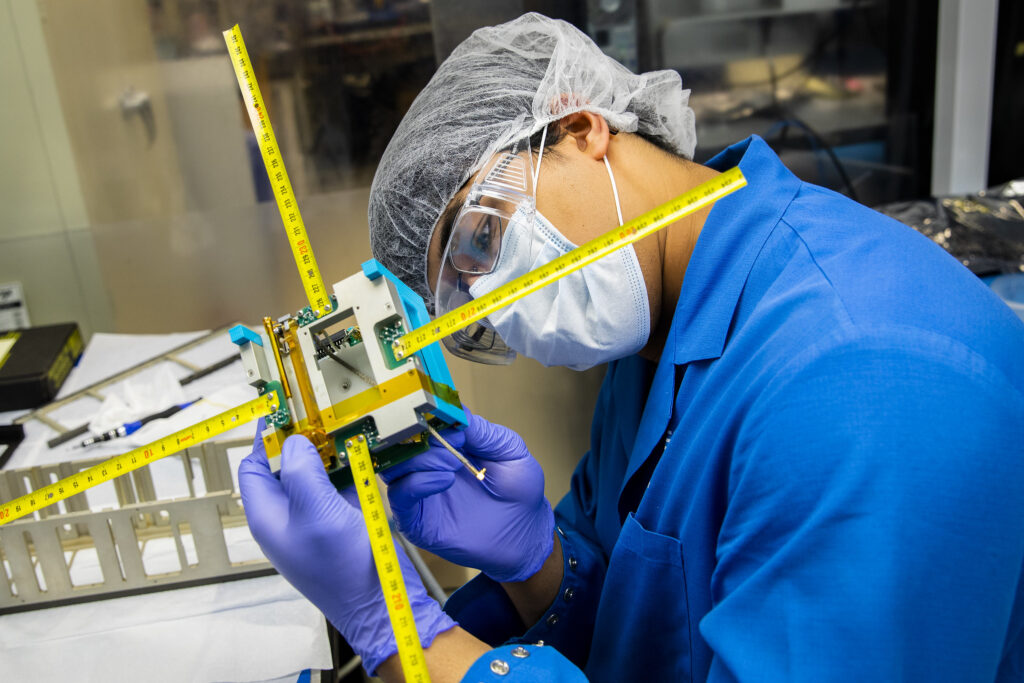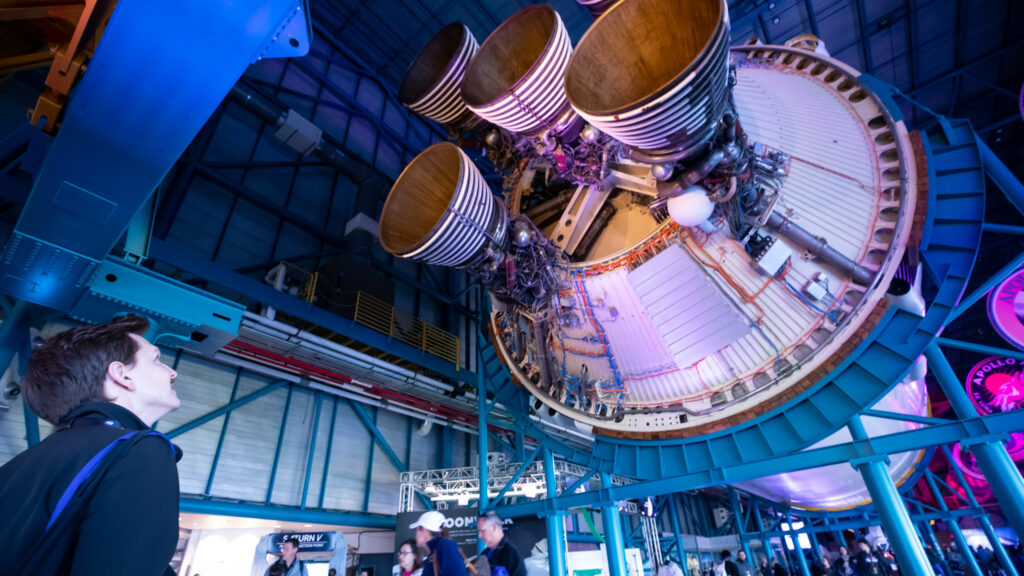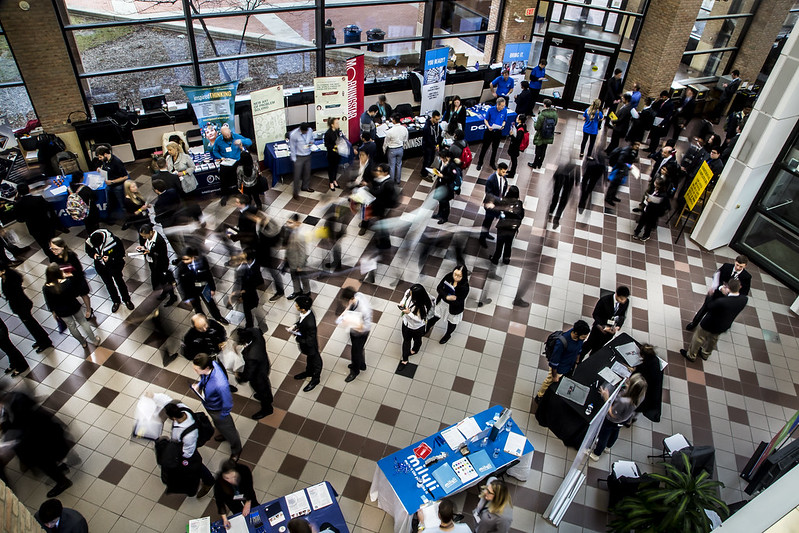Career Launchpad
Welcome to your Career Launchpad, a stepping stone towards an exciting career in the realm of Climate and Space Sciences. As you embark on this journey, we provide you with the tools and insights to navigate through this dynamic industry.
A roadmap to success
Here, you will find a wealth of resources designed to help you chart your career path. Learn about the industry’s key players, understand the research opportunities that lie within your reach, and discover how to create a compelling professional profile.
Our guide to effective networking and mastering the art of coffee chats will help you build and nurture your professional relationships. We also highlight the significance of engaging with Space Student Organizations like BLiSS, WAA, MASA, and MRover, to broaden your horizons and strengthen your network.
From securing enriching internships to landing your first job, here is a roadmap to success. So, gear up for an adventure that’s as vast and exhilarating as the universe itself. Welcome aboard the Career Launchpad!
Securing A Job

Launching your career is a journey filled with learning, exploration, and growth. This section is designed to guide you through the process of securing your first job, from understanding the job market to making a strong first impression. Get ready, and let’s begin this journey:
Understanding the Industry
Your career journey begins with understanding the landscape of the industry:
- Understanding Key Players: Familiarize yourself with the significant organizations, emerging startups, research institutes, and governmental bodies in the industry. Understand their missions, projects, and cultures to identify potential career destinations.
- Analyzing Job Postings: Analyze job postings to understand the common requirements, desired skills, and typical responsibilities. This understanding will help you tailor your applications and prepare for interviews effectively.
Building Your Professional Profile
Your job application is the key to securing a solid career, and presenting your potential to future employers. Let’s ensure it’s built to impress:
- Tailored Resume: Your resume is your career blueprint. Customize it to highlight the skills, experiences, and achievements that align with the job requirements.
- Compelling Cover Letter: Your cover letter is your mission statement. Craft a compelling narrative that connects your passion, experiences, and aspirations to the role and the organization.
- Professional Online Presence: Your online profiles, particularly on LinkedIn, are your digital billboard. Make sure they showcase your expertise, achievements, and your professional journey.
Acing the Interview
The job interview is your stepping stone. It presents a chance for you to demonstrate your capabilities and how well you align with the role. Here’s how you can secure a successful outcome:
- Prepare in Advance: Research the company, the role, and the industry trends. Understand the company’s mission and values and how the role contributes to these.
- Practice Your Approach: Prepare responses for common interview questions. Frame your responses to highlight your skills, experiences, and alignment with the role and the company.
- Show Your Gratitude: Send a follow-up thank you note after the interview. It’s a small step that can leave a lasting impression.
Starting Your First Job
Once you secure your first job, your journey is only starting. Here’s how you can navigate a successful career in the fields of climate and space sciences and engineering:
- Continuous Learning: Stay curious and open to new challenges. Seek feedback and look for opportunities to grow and improve.
- Building Your Network: Establish positive relationships with your colleagues. Networking continues even after you land the job—it’s a lifelong process.
- Stay Updated: Keep up with industry trends and advancements. This knowledge can help you stay relevant and open doors for career progression.
Understanding the Climate Industry
The climate sciences industry is an expansive field dedicated to understanding and addressing the complexities of climate change. It encompasses a wide range of career opportunities, from academic and government research positions to roles in private sector companies and non-governmental organizations (NGOs) focused on climate adaptation, mitigation, environmental conservation, and resiliency solutions.
Explore the career guide and find career advisors in Michigan Engineering: Engineering Career Resource Center
Browse climate jobs and learn about the future of climate jobs from the Environmental and Energy Study Institute: Fact Sheet on Climate Jobs
Professional Organizations in the Climate Industry
- American Meteorological Society
- Advancing Earth & Space Sciences
- American Society of Adaptation Professionals
Key Players in the Climate Industry
- Government/Research: Some of the most known players in this category include, but are not limited to The Cooperative Institute for Great Lakes Research (CIGLR), NOAA Great Lakes Environmental Research Laboratory (CLERL), NOAA National Weather Service, The National Renewable Energy Lab (NREL), U.S. Environmental Protection Agency (EPA), U.S. Forest Service, U.S. Geological Survey (USGS), United States National Aeronautics and Space Administration (NASA), The Great Lakes Commission (GLC), the State of Michigan Department of Environment Great Lakes and Energy (EGLE), and The National Renewable Energy Lab (NREL).
- Consulting: This category includes but is not limited to some of the companies engaged in the private climate sector – ICF, Clearway Energy, Inc., Accenture,
- Private Firms and Businesses
- Nonprofits and Non-Governmental Organizations (NGOs)
Understanding the Space Industry

The space industry is a vast realm of opportunities that goes beyond merely government agencies and big corporations. From government and research-based roles to billionaire-owned corporations, legacy aerospace firms to innovative startups, the space industry offers a diverse range of career paths.
Key Players in the Space Industry
- Government/Research: The most known players in this category include NASA, JPL, Aerospace Corp, and renowned research labs like MIT Lincoln Labs and APL. Non-US government agencies such as the European Space Agency (ESA), Japan Aerospace Exploration Agency (JAXA), and the Canadian Space Agency (CSA) also play a significant role. Research labs can offer an excellent environment for non-US citizens.
- Large Corporations: This category includes SpaceX and Blue Origin, both at the forefront of private space exploration and technology.
- Legacy Aerospace Firms: These are the traditional players in the aerospace sector, including Boeing, Northrop, Lockheed, Airbus, and Raytheon/Collins.
- Innovative Startups and Notable Mentions: The last decade has seen a surge in space startups bringing unique solutions and innovations to the industry. These include L3 Harris, Millennium, Relativity, Virgin Galactic, Honeybee, Terran Orbital, Rocket Lab, Planet, Blue Halo, Aerojet, Astra, and many more.
The space industry is booming, and with every passing year, it continues to diversify and expand, offering fresh and exciting opportunities for budding professionals.
Career Pathways

Entering the field of Climate and Space Sciences is akin to starting a journey of discovery. There are numerous paths to follow and endless opportunities to seize. For students, a crucial part of this journey involves gaining hands-on research experience, which can clarify your career direction and influence your choice of courses.
Engaging in research enhances your understanding of your chosen field and equips you with valuable problem-solving skills. It allows you to bring theoretical knowledge from the classroom to life, contributes to the advancement of your field, and helps shape your academic and professional path. Moreover, it provides a practical perspective on course content, helping you understand how classroom theories translate into real-world applications.
Research Opportunities at the University
Our university is a hub of innovative research, with opportunities across various departments. Each department offers unique courses that align with the research opportunities. Here’s a glimpse:
- AERO (Aerospace Engineering): If you’re drawn to the mysteries of the universe and the intricacies of spacecraft design, propulsion, and control systems, AERO is your launch pad. The courses in this department will equip you with the theoretical knowledge needed to contribute effectively to research projects in aerospace engineering.
- CLaSP (Climate and Space Sciences and Engineering): The CLaSP department takes you on a journey through earth and space sciences, atmospheric and climate studies, and space weather. If you’re curious about our planet’s interaction with the space environment, the courses offered here will provide you with the foundation needed to make significant contributions in these fields.
- IOE (Industrial and Operations Engineering): IOE is perfect for students drawn to optimization, operations research, and systems engineering. The courses in this department will equip you with the skills necessary to optimize and manage complex systems, a crucial aspect of planning and executing space missions.
- NERS (Nuclear Engineering and Radiological Sciences): NERS dives deep into nuclear engineering and radiological sciences, which have exciting applications in space exploration, especially in propulsion and energy generation. The coursework in NERS will provide you with a solid foundation in these areas.
- NAME (Naval Architecture and Marine Engineering): The NAME department embarks on the exploration of designing, building, and operating vessels and structures that withstand the demanding marine environment. While primarily focused on aquatic vehicles, the principles of hydrodynamics, structural mechanics, and material science are profoundly analogous to those encountered in spacecraft design. Courses in this department not only prepare you for marine engineering challenges but also offer unique perspectives that can be applied to solving problems in space exploration, such as designing vehicles for other planets’ oceans or optimizing spacecraft for the harsh conditions of space.
- ROBOTICS: The Robotics department propels students into the future of autonomous systems and intelligent machines, with applications ranging from terrestrial to extraterrestrial environments. The coursework and research opportunities delve into artificial intelligence, machine learning, computer vision, and control systems—key areas in developing autonomous rovers, drones, and robots for space exploration. If you’re fascinated by the prospect of creating machines that can navigate and perform tasks in space or on other planets autonomously, this department will provide you with the cutting-edge skills and knowledge to contribute to the next generation of robotic explorers.
On-Campus Laboratories
In addition to classroom learning, our university is home to multiple dedicated laboratories that focus on space and climate research. Some examples are linked below:
- Space Physics Research Laboratory (SPRL): SPRL offers you the opportunity to apply the theories learned in your classes to real-world climate and space science projects.
- Michigan eXploration Lab (MXL): At MXL, you can put your theoretical knowledge to practical use as you design, build, and launch CubeSats equipped with scientific instruments.
- The Marine Hydrodynamics Laboratory (MHL): MHL offers hands-on experiments and research in fluid dynamics with cutting-edge facilities like Wind Wave Tank and Recirculating Cavitation Channel.
These labs not only provide practical experience but also help you understand how the knowledge acquired in your classes is used in real-world scenarios.
Opportunities Abroad
The exploration of climate and space sciences is not confined to our campus or even our country. If you’re looking to broaden your horizons, there are exciting opportunities around the globe.
A great starting point in the space sciences is Space Bandits, a platform that lists numerous foreign space companies offering research opportunities. For the climate sciences, one initiative at the University of Michigan includes sending student delegates to participate in the COP, the United Nations Convention on Climate Change, an opportunity provided to students through Climate Blue.
Understanding What a Climate Scientist Does
The important work in climate sciences spans a broad range of purposes, whether it involves modeling and forecasting, climate adaptation and resiliency, sustainability, renewable energy, reinsurance, energy efficiency, clean transportation, environmental engineering or climate policy. Climate science also plays a pivotal role in government operations, so government careers may be available in the areas of energy or defense.
Below are some sample job titles in climate sciences.
- Executive Director in Global Change Science and Solutions
- Renewable Energy Siting Specialist
- Climatologist
- Analyst
- Research Assistant
- Research Engineer
- Climate Data Science Officer
- Director in Energy Strategies
- Operations Coordinator in International Defense Forces
- Air quality specialist
- Assistant Environmental Engineer
- Senior Development Engineer
- Environmental Quality Analyst
Understanding the Organizational Chart for Space Missions
Every successful space mission is like a well-orchestrated symphony, involving various roles harmoniously working together towards a common goal. As you navigate your career in the field of Climate and Space Sciences, gaining clarity on the specific roles within a space project can guide you towards the right path that aligns with your skills and interests.
The following organizational chart, based on several missions from the Space Physics Research Laboratory (SPRL), illustrates the breadth of roles involved in a typical space mission:
- Project Investigator: This is often the lead scientist who proposes the mission and is responsible for meeting the scientific objectives.
- Business Team: This team manages budgeting, contracts, and other business-related aspects of the project.
- Science Team: This team works closely with the Project Investigator to ensure that the mission can meet its scientific objectives.
- Project Manager: This person oversees the project from start to finish, coordinating teams, managing timelines, and ensuring project objectives are met.
- Safety & Mission Assurance: This team ensures that all aspects of the mission adhere to safety protocols and that mission success is highly likely.
- Systems Engineer: This engineer ensures all systems work together effectively, from initial design through to mission operation.
- Structures and Mechanisms Team: This team is involved in designing and testing the physical components of the spacecraft.
- Thermal Team: This team manages the thermal control systems, which regulate the temperatures of the spacecraft’s components.
- Power Systems Team: This team is responsible for the design and management of the power systems, including solar arrays and batteries.
- Attitude Determination and Control Team: This team handles the spacecraft’s orientation systems, crucial for ensuring the spacecraft can navigate and carry out its mission.
- Command & Data Handling Team: This team manages the spacecraft’s communications systems and onboard computer systems.
- Guidance and Navigation Team: This team ensures the spacecraft gets to its destination and can navigate in space.
- Propulsion Team: This team designs and manages the propulsion systems, which allow the spacecraft to maneuver in space.
- Assembly, Integration and Test Team: This team assembles the spacecraft and tests it to ensure it can withstand the harsh conditions of space.
- Data Operations Center: This team manages the receipt, processing, and distribution of data from the spacecraft.
Each of these roles plays a crucial part in the mission, from the initial conceptualization to the final execution. Whether your skills are best suited to the intricacies of systems engineering, the precision of guidance and navigation, or the strategic oversight of project management, there’s a place for you in this diverse and exciting field.
Remember, the objective is to find a role that resonates with your interests, aligns with your skills, and allows you to contribute meaningfully to the mission. As you explore these different roles, consider what aspects of a space mission you find most exciting and fulfilling. This exploration will help guide your course selection, research opportunities, and ultimately, your career trajectory in the vast universe of Climate and Space Sciences.
Building Your Professional Profile

Creating a powerful professional profile is an essential stepping stone in your career journey. A well-crafted profile serves as your professional beacon, illuminating your unique skills, experiences, and your passion for the field. It’s not merely a resume; it’s a comprehensive snapshot of your professional persona. Here’s how you can build a compelling professional profile:
Crafting Your Resume: A Snapshot of Your Journey
Your resume is your professional passport, providing a glimpse into your career journey. It needs to narrate your story in a concise and compelling way that resonates with the reader and generates interest. Here’s how you can craft an impactful resume:
- Tailor Your Resume: Avoid the trap of a generic resume. Every role you apply for is unique and your resume should reflect this uniqueness. Highlight the skills and experiences that align directly with the job requirements.
- Quantify Achievements: Numbers speak volumes. They provide a tangible measure of your achievements. Instead of saying “Led a research project,” say “Led a team of 5 on a research project that improved process efficiency by 20%”. This provides a clearer picture of your impact.
- Use Action Verbs: Begin each bullet point with a strong action verb. This can make your resume more dynamic and engaging. Words like “led”, “developed”, “designed”, and “analyzed” show that you’re action-oriented.
- Highlight Relevant Projects and Coursework: Particularly for students and early-career professionals, relevant academic projects, research, and coursework can demonstrate your skills and knowledge. Be sure to include these in your resume.
- Include Technical Skills: In the field of Climate and Space Sciences, certain technical skills can be particularly valuable. Highlight any relevant software, tools, or technical skills you have.
- Keep it Concise: Your resume should ideally fit on one page. Be concise and focus on your most significant achievements and experiences. Remember, your resume is a highlight reel, not a comprehensive list of everything you’ve done.
- Proofread: A resume free of typos and grammatical errors is a reflection of your attention to detail. Always proofread your resume, and consider having a mentor or career counselor review it as well.
The University of Michigan has multiple resources to help you craft your resume. Visit Resume Resources to know more.
Writing a Cover Letter: Your Professional Narrative
Tell your story. Your cover letter is your opportunity to delve deeper into your professional journey. It should complement your resume and provide context to your experiences. Here’s how to write an engaging cover letter:
- Showcase Your Passion: Your cover letter is the perfect place to express your enthusiasm for the field. Talk about what drew you to the field and why you’re excited about the role.
- Connect Your Experiences to the Role: Pick one or two key experiences and discuss how they have prepared you for the role. Be specific about the skills you gained and how they apply to the position.
- Demonstrate Knowledge of the Company: Show that you’ve done your research. Talk about what excites you about the company or the work they are doing. This shows your genuine interest in the role.
- End on a Forward-Looking Note: Conclude your letter by looking towards the future. Express your excitement about the potential opportunity to contribute to the company.
Building a professional profile is a dynamic process. As you grow in your career, gain new experiences, and develop new skills, continue to update and refine your profile.
Professional Networking Platforms
In the digital age, your online professional presence is equally important. Platforms like LinkedIn allow you to showcase your professional profile to a wide audience. Keep your LinkedIn profile up-to-date, engage with content relevant to your field, and use it for networking.
The Art of Networking

Networking is about connecting the dots to create a meaningful pattern that can guide your career journey. Whether it’s through professional gatherings or informal coffee chats, networking can unlock a wealth of opportunities. Here’s how you can master the art of networking:
Networking: More Than Just Making Contacts
Networking is a dynamic process of building and nurturing professional relationships. It’s not just about collecting business cards but about creating meaningful connections. Here’s why it matters:
- Discovering Opportunities: Networking can lead you to opportunities that you won’t find in job ads. For example, you might meet someone who knows of a job opening in their company that hasn’t been advertised yet.
- Learning from Others: Through networking, you can gain insights from professionals in your field. For instance, a quick conversation with a seasoned professional at a conference could provide you with a valuable perspective on industry trends.
- Building Reciprocal Relationships: Effective networking is about give and take. If you help others—by sharing information, providing introductions, or offering support—you’ll likely find others more willing to help you.
Strategies for Effective Networking
Effective networking requires strategy, authenticity, and follow-through. Here are some tips to help you navigate the networking landscape:
- Start with Who You Know: Begin networking with your existing contacts—professors, classmates, and family friends. They can provide introductions to others in your field of interest.
You might not realize it, but you already have a network. It includes:- Professors you’ve made a positive impression on.
- Classmates who have graduated and are now working in the industry.
- University of Michigan (UM) alumni working in nearly every space company.
- Alumni from other affiliations such as fraternities, sororities, or professional organizations like WAA, SWE, TBP.
To tap into your existing network:
- Schedule meetings with your professors or existing connections in the industry. Discuss your interests, ask for recommendations on companies or labs to look at, or seek introductions to their contacts in your areas of interest. Be humble, be flexible, and take their advice seriously.
- Leverage the power of UM’s extensive connections. Many opportunities go underutilized because students don’t reach out. Be proactive in seeking out these opportunities.
- Get Involved: Join professional organizations, clubs, or online groups related to Climate and Space Sciences. Attend industry events, seminars, and workshops. These are great places to meet like-minded individuals.
- Leverage Social Media: Platforms like LinkedIn, Twitter, and research-focused sites like ResearchGate can be great for connecting with professionals in your field. Share insightful posts, comment on others’ work, and don’t hesitate to reach out for introductions.
- Keep in Touch: Networking isn’t a one-time event. Maintain your relationships by checking in periodically, sharing relevant articles, and congratulating contacts on their professional achievements.
Mastering Coffee Chats
Informal coffee chats are an excellent networking tool. They provide an opportunity to build relationships in a relaxed setting. Here’s how you can make the most of coffee chats:
- Be Prepared: Research the person you’re meeting. Understand their role and their career path. Prepare thoughtful questions based on what you learn.
- Listen Actively: Show genuine interest in what the other person is saying. Ask follow-up questions and engage in the conversation.
- Share Your Story: Be ready to talk about your experiences, your goals, and your passion for Climate and Space Sciences. However, remember that it’s a two-way conversation.
- Follow Up: After the chat, send a thank you note. Mention something specific from your conversation, and express interest in staying in touch.
Remember, people often enjoy talking about themselves and helping students in a low-commitment way. Use this to your advantage.
After the Coffee Chat
Following up after the chat is crucial. It helps to strengthen the connection you’ve made:
- Send a thank you email or message.
- If they accepted your resume, follow up in a week or two, asking if there’s anyone else they think you should speak to regarding potential hiring opportunities.
- Keep in touch – add them on LinkedIn, engage with their posts, and stay active on the platform.
- For internships, reach back out about 1-2 months prior to the application deadline. For jobs, reach back out around 3-4 months prior to your graduation.
Be a People-Person
Whether you’re networking or interviewing, remember that how you present yourself is crucial. Be friendly, respectful, and personable. Emphasize your curiosity and desire to learn. Recognize areas for improvement and show a growth mindset.
Acing the Interview

Job interviews are a critical opportunity to showcase your skills, experiences, and alignment with the role and the organization. This section is your comprehensive guide to mastering interviews:
Preparing for the Interview
The Pregame: Preparing for the Interview
Solid preparation is the bedrock of a successful interview. Here’s how you can gear up:
- Team Analysis: Research the organization thoroughly. Understand their mission, culture, projects, and the industry landscape. This knowledge helps you tailor your answers and shows your genuine interest in the company.
- Position Strategy: Scrutinize the job description. Understand the skills and experiences the role requires. Be ready to discuss how your background and expertise align with these requirements.
- Anticipating Plays: Prepare for common interview questions. “Why do you want to work here?” and “Tell us about a time you overcame a challenging situation at work” are classics. Frame your responses using the STAR method (Situation, Task, Action, Result) to share detailed and structured stories from your experience; more on this later.
- Prepare Your Offensive: Develop thoughtful questions to ask during the interview about the role, team, or company culture. This shows your engagement and helps you evaluate if the company aligns with your career goals.
Game Day: During the Interview
The interview is your stage. Here’s how to give an Oscar-worthy performance:
- The Power of First Impressions: Be punctual and presentable. A firm handshake, a warm smile, and a confident introduction can set the tone for the rest of the interview. Remember to maintain eye contact, and show enthusiasm in your body language.
- Articulate Your Abilities: Speak confidently about your skills, knowledge, and experiences. Use the STAR method to structure your responses to behavioral questions. Remember, each answer should highlight how your unique experiences and skills make you the best fit for the job.For instance, if asked about a time when you had to work under pressure, you might respond:
- Situation: “In my previous role, we had a critical project that was behind schedule due to unforeseen technical issues.”
- Task: “As the project lead, my task was to ensure we met the deadline without compromising the quality of our work.”
- Action: “I reorganized the project schedule, introduced an efficient communication plan, and coordinated extra working hours for the team.”
- Result: “We managed to complete the project on time while maintaining high-quality standards. This experience taught me valuable lessons in crisis management, teamwork, and strategic planning.”
- Show Genuine Enthusiasm: Convey your passion for the role and the company. Discuss how the role aligns with your career aspirations, and how you are excited about contributing to the company’s objectives.
- Communicate Clearly: Listen attentively to the interviewer’s questions and respond clearly and concisely. Don’t rush your answers. If you need a moment to gather your thoughts before responding, that’s perfectly acceptable.
- Engage with the Interviewer: The interview is a two-way process. Use this opportunity to ask your prepared questions about the role, the team, or the company culture. This not only gives you useful insights but also demonstrates your genuine interest in the role. For instance, you might ask, “Could you tell me more about the team I would be working with?” or “What are the opportunities for professional development within the company?”
Remember, the goal is not just to answer questions but to engage in a meaningful conversation. Let your personality shine, and show them why you’re a great fit for the company.
Postgame: After the Interview
The game isn’t over when the interview ends. Here’s your post-interview strategy:
- Post-Match Courtesy: Send a personalized thank-you note to the interviewers, expressing your appreciation for the opportunity. It’s a small step that can have a big impact.
- Game Analysis: Reflect on your performance. What went well? Where could you improve? Use this analysis to hone your interview skills for future games.
Remember, authenticity is crucial. Be genuine and let your personality shine through. After all, organizations don’t just hire skills; they hire people.
Internship Guide

Internships are an invaluable way to gain practical experience, apply academic knowledge, and make industry connections. They can provide a springboard into the realm of Climate and Space Sciences. Here’s a guide to help you navigate the process of securing an internship:
Why Internships Matter
Internships provide you with the opportunity to:
- Apply Your Knowledge: Internships allow you to apply the theories and principles you learn in class to real-world problems.
- Gain Practical Experience: You’ll gain hands-on experience working on projects and tasks that professionals in the space industry tackle daily.
- Build Your Network: Internships are a fantastic way to meet industry professionals and make connections that can be beneficial for your future career.
- Understand the Industry: You’ll learn about the latest trends, challenges, and advancements in the field of Climate and Space Sciences.
Finding the Right Internship
Finding the right internship requires research, preparation, and persistence. Here are some tips to help you in your search:
- Identify Your Interests: Identify what you’re passionate about within the field of Climate and Space Sciences. This will help you target your internship search to companies and roles that align with your interests.
- Research Companies: Learn about potential companies and their internship programs. Look for companies that align with your career goals and values.
- Prepare Your Application: Tailor your resume and cover letter to each internship application. Highlight relevant coursework, projects, and experiences.
- Practice Your Interview Skills: If you’re invited for an interview, be ready to discuss your skills, experiences, and passion for the field. Practice common interview questions and prepare questions to ask the interviewer.
Making the Most of Your Internship
Once you secure an internship, it’s important to make the most of the experience. Here are some tips to help you excel:
- Be Proactive: Take the initiative to ask for tasks and projects. Show your eagerness to learn and contribute.
- Ask for Feedback: Regularly ask for feedback on your performance. This can help you improve and grow during your internship.
- Network: Take advantage of opportunities to network with colleagues, managers, and other interns. Remember, the connections you make during your internship can benefit your future career.
- Reflect on Your Experience: Reflect on what you’ve learned during your internship. What skills have you gained? What did you enjoy? What do you want to learn more about? This reflection can guide your future career decisions.